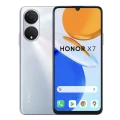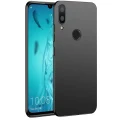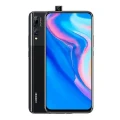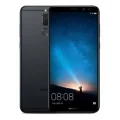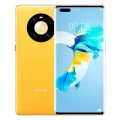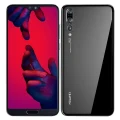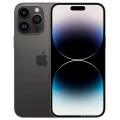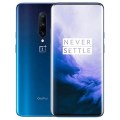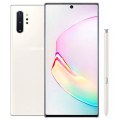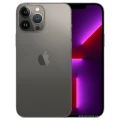- Awesome page
- Latest Mobile
- Smartphones
- Google Pixel 3
Google Pixel 3
Google Pixel 3 Price in Bangladesh
The Google Pixel 3 Price in Bangladesh is BDT 71,900 for the 64GB storage variant. This smartphone features a 5.5-inch P-OLED capacitive display, offering vibrant colors and sharp visuals. Powered by the Qualcomm SDM845 Snapdragon 845 Octa-Core processor clocked at 2.5 GHz, the Google Pixel 3 delivers excellent performance. It comes with 4GB of RAM and either 64GB or 128GB of internal storage, though it does not support external storage expansion. The device is equipped with a 12.2 MP rear camera and dual 8 MP front cameras, ideal for photography enthusiasts. The Google Pixel 3 is powered by a 2925mAh Li-ion battery, ensuring reliable daily use. The Google Pixel 3 Price in Bangladesh reflects its premium build and strong performance in the smartphone market.
Specifications
General
| Model | Google Pixel 3 |
| Announced | 2018, October |
| Released | 2018, November |
| Status | Available |
| Official price | 4GB 64GB ৳71,990 |
| Unofficial price | 4GB 64GB ৳16,500 |
Design
| Dimensions | 145.6 x 68.2 x 7.9 mm (5.73 x 2.69 x 0.31 in) |
| Weight | 148 g (5.22 oz) |
| Colors |
Clearly White, Just Black, Not Pink |
Network
| Technology | GSM / CDMA / HSPA / EVDO / LTE |
| 2G Network |
GSM 850 / 900 / 1800 / 1900 CDMA 800 / 1900 |
| 3G Network |
HSDPA 850 / 900 / 1700(AWS) / 1900 / 2100 CDMA2000 1xEV-DO |
| 4G Network | LTE band 1(2100), 2(1900), 3(1800), 4(1700/2100), 5(850), 7(2600), 8(900), 12(700), 13(700), 17(700), 18(800), 19(800), 20(800), 25(1900), 26(850), 28(700), 29(700), 32(1500), 38(2600), 39(1900), 40(2300), 41(2500), 42(3500), 46, 66(1700/2100), 71(600) |
| GPRS <strong>GPRS</strong> (General Packet Radio Service) is a packet oriented mobile data service on the 2G and 3G cellular communication system's global system for mobile communications (GSM), Generally, GPRS is used for the purpose of wireless data transfer, such as sharing pictures and videos or browsing the Internet via a mobile phone connection. | |
| EDGE <strong>EDGE</strong> (Enhanced Data GSM Environment) is a wireless network technology generally considered the next step in the 2G network offers data transfer rates up to four times faster than ordinary GSM networks, Generally, EDGE is used for the purpose of wireless data transfer, such as sharing pictures and videos or browsing the Internet via a mobile phone connection. | |
| Speed | HSPA 42.2/5.76 Mbps, LTE-A (5CA) Cat16 1024/75 Mbps |
Display
| Display Type <strong>Display Technology => </strong> A number of display technologies and types used in mobile phones => TFT (Thin Film Transistor), IPS (In-Place Switching), OLED (Organic Light Emitting Diode), AMOLED (Active-Matrix Organic Light-Emitting Diode), Super AMOLED (an even advanced version of AMOLED), Resistive Touchscreen (Resistive touchscreens contain two layer of conductive material with a very small gap between them which acts as a resistance), Capacitive Touchsceen (Capacitive touchscreen technology consists of a layer of glass coated with a transparent conductor) | P-OLED capacitive touchscreen, 16M colors |
| Size | 5.5 inches, 76.7 cm2 (~77.2% screen-to-body ratio) |
| Resolution | 1080 x 2160 pixels, 18:9 ratio (~443 ppi density) |
| Features |
Corning Gorilla Glass 5- Always-on display- 100% DCI-P3 coverage- HDR |
Camera
Main camera
| Camera Setup | Dual |
| Primary <strong>Camera</strong> is able to capture photographs and usually videos, The most important characteristics of a camera are the resolution (measured in megapixels), lens focus type (fixed or automatic), higher megapixel cameras are known to capture higher quality photos, but not always a good measurement of the photos quality. |
12.2 MP, f/1.8, 28mm (wide), 1/2.55&amp;quot;, 1.4µm, OIS, dual pixel PDAF |
| Features |
Dual-LED flash, Auto-HDR, panorama |
| Video | 2160p@30fps, 1080p@30/60/120fps, 720p@240fps, 1080p@30fps (gyro-EIS) |
Selfie camera
| Camera Setup | Dual |
| Primary <strong>Camera</strong> is able to capture photographs and usually videos, The most important characteristics of a camera are the resolution (measured in megapixels), lens focus type (fixed or automatic), higher megapixel cameras are known to capture higher quality photos, but not always a good measurement of the photos quality. |
8 MP, f/1.8, 28mm (wide), PDAF 8 MP, f/2.2, 19mm (ultrawide), no AF |
| Features |
Auto-HDR |
Hardware
| Chipset <strong>Chipset</strong> is a group of integrated circuits designed to perform one or a more dedicated functions, often with real time computing constraints, Popular smartphones are equipped with more advanced embedded chipsets that can do many different tasks depending on their programming. | Qualcomm SDM845 Snapdragon 845 (10 nm) |
| CPU <strong>CPU</strong> (Central Processing Unit) mostly known as processors, CPU processes instructions in order to carry out certain functions that make your device operate properly. Processors are often described as the brain of computers, smartphones and tablets, Smartphones and tablets rely on processors to carry out their every task, Processors are an incredibly important factor in selecting any type of computing device, including your smartphone. | Octa-core (4x2.5 GHz Kryo 385 Gold & 4x1.6 GHz Kryo 385 Silver) |
| GPU <strong>GPU</strong> (Graphics Processing Unit) is a single-chip processor designed to rapidly manipulate and alter memory to accelerate the creation of images in a frame buffer intended for output to a display, This includes things such as lighting effects, object transformations, and 3D motion. | Adreno 630 |
| RAM (Memory) <strong>RAM</strong> (Random Access Memory) is a type of computer memory that can be accessed randomly, any byte of memory can be accessed without touching the preceding bytes that allows information to be stored and accessed quickly from random locations. RAM is the most common type of memory found in computer systems, smartphones, tablets and other electronic devices. | 4 GB |
| Internal Storage <strong>Internal Storage</strong> is a data storage space (flash memory) mostly used in smartphones, tablets and other electronic devices where operating system, apps, music, photos, videos, files and other user data Is stored. | 64/128 GB |
| Sensors <strong>Sensors</strong> are electronic components that detects and responds to some type of input from the physical environment. The specific input could be light, heat, motion, moisture, pressure and location, The output is generally a signal that is converted to use in computing systems, a location sensor, such as a GPS receiver is able to detect current location of your electronic device. |
Fingerprint - (rear-mounted), accelerometer, gyro, proximity, compass, barometer |
Connectivity
| Bluetooth <strong>Bluetooth</strong> is a wireless communications technology for exchanging data between mobile phones, headsets, computers and other network devices over short distances without wires, Bluetooth technology was primarily designed to support simple wireless networking of personal consumer devices. | 5.0, A2DP, LE, aptX HD |
| Infrared <strong>Infrared</strong> connectivity is an old wireless technology used to connect two electronic devices. It uses a beam of infrared light to transmit information and so requires direct line of sight and operates only at close range. | |
| USB | 3.1, Type-C 1.0 reversible connector (PowerDelivery 2.0) |
| GPS <strong>GPS</strong> The Global Positioning System is a satellite-based radio navigation system, GPS permits users to determine their position, velocity and the time 24 hours a day, in all weather, anywhere in the world, In order to locate your position, your device or GPS receiver must have a clear view of the sky. | Yes, with A-GPS, GLONASS, BDS, GALILEO |
| NFC <strong>NFC</strong> (Near field communication) is a set of standards for smartphones and similar devices to establish peer-to-peer radio communications with each other by touching them together or bringing them into proximity, usually no more than a few inches. |
Battery
| Battery Type <strong>Battery Type => </strong> Cell phones run on various kinds of batteries depending on the manufacturer, phone size or shape and features. There are basically four types of cell phone batteries => Lithium Polymer, Lithium Ion, Nickel Metal Hydride and Nickel Cadmium. | Non-Removable Li-Po |
| Capacity <strong>Battery Capacity</strong> is a measure (typically in Amp-hr) of the charge stored by the battery, and is determined by the mass of active material contained in the battery. The battery capacity represents the maximum amount of energy that can be extracted from the battery under certain conditions. | 2915 mAh battery |
| Charging Charging | Fast battery charging 9V/2A 18W QI wireless charging |
Google Pixel 3 Delivers More than Just a Pretty Picture
Google has been making waves in the smartphone industry with its Pixel series. The Google Pixel 3, introduced in late 2018, is no exception. This device promises to blend top-notch hardware with Google’s software prowess, delivering an all-encompassing smartphone experience. But does it live up to the hype? Let’s find out.
Design and Build
The first thing you’ll notice about the Google Pixel 3 is its sleek and minimalist design. Crafted with a blend of glass and aluminum, the phone feels premium in hand. The glass back not only adds to the aesthetic appeal but also enables wireless charging, a feature that is becoming increasingly standard in high-end smartphones.
The front of the phone is dominated by a 5.5-inch OLED display with slim bezels and no notch, giving it a clean, unobstructed look. Despite its compact size, the phone is incredibly sturdy and can withstand daily wear and tear. The fingerprint sensor is conveniently located on the back, offering quick and secure access.
In terms of color options, the Pixel 3 is available in Just Black, Clearly White, and Not Pink, allowing users to choose a style that suits their personality. Overall, the design and build of the Pixel 3 are both functional and visually appealing, making it a standout in the smartphone market.
Camera Performance
When it comes to smartphone photography, the Google Pixel 3 is in a league of its own. Featuring a 12.2 MP rear camera with an f/1.8 aperture, this device excels in capturing stunning photos in various lighting conditions. Google’s advanced computational photography techniques, such as HDR+ and Super Res Zoom, ensure that every shot is crisp and vibrant.
One of the standout features of the Pixel 3’s camera is its exceptional low-light performance. With Night Sight mode, users can capture detailed and colorful photos even in near-darkness, without the need for a flash. This capability sets the Pixel 3 apart from many of its competitors.
Portrait mode on the Pixel 3 is another highlight, delivering professional-quality bokeh effects that make subjects stand out against beautifully blurred backgrounds. Whether you’re taking selfies or snapping pictures of friends and family, the camera consistently produces impressive results.
Display and Battery Life
The Pixel 3 boasts a 5.5-inch Full HD+ OLED display with a resolution of 2160 x 1080 pixels. The screen delivers vibrant colors, deep blacks, and excellent contrast, making it a joy to use for watching videos, playing games, or browsing the web. The display supports HDR content, further enhancing the visual experience.
Battery life is a crucial factor for any smartphone user, and the Pixel 3 doesn’t disappoint. With a 2915 mAh battery, the device easily lasts a full day of moderate usage. Google has also included features like Adaptive Battery, which uses AI to manage power consumption more efficiently.
For those moments when you need a quick recharge, the Pixel 3 supports fast charging, providing up to 7 hours of use from just a 15-minute charge. Wireless charging is also available, offering added convenience for users on the go.
Performance and Software
Under the hood, the Google Pixel 3 is powered by a Qualcomm Snapdragon 845 processor, paired with 4GB of RAM. This combination ensures smooth and responsive performance, whether you’re multitasking, gaming, or using demanding apps. The phone runs on pure Android, offering a clean and bloatware-free user experience.
One of the key advantages of owning a Pixel device is timely software updates directly from Google. The Pixel 3 receives regular security patches and new Android features, ensuring that your device remains secure and up to date. With Android 9.0 Pie out of the box and updates to the latest Android versions, the Pixel 3 offers a seamless and enjoyable software experience.
User Experience
The Google Pixel 3 excels in providing a user-friendly experience. The interface is intuitive, with smooth animations and easy navigation. Google’s suite of apps, including Google Assistant, Google Photos, and Google Lens, are deeply integrated, adding to the overall functionality and convenience of the device.
The phone’s dual front-facing speakers deliver impressive audio quality, making it ideal for watching videos or listening to music. The Active Edge feature allows users to quickly launch Google Assistant by simply squeezing the sides of the phone, adding an extra layer of convenience.
Overall, the Pixel 3 offers a well-rounded user experience that caters to both tech enthusiasts and everyday smartphone users.
Comparison with Competitors
When compared to other smartphones in its class, the Google Pixel 3 holds its own quite well. Competitors like the iPhone XS and Samsung Galaxy S9 offer similar features but come at a higher price point. The Pixel 3’s camera performance, timely software updates, and unique features like Night Sight and Active Edge make it a compelling choice.
While the Pixel 3 may lack some of the bells and whistles found in other flagship devices, such as a higher RAM capacity or expandable storage, its overall performance and user experience are hard to beat. For those who prioritize camera quality, software updates, and a clean user interface, the Pixel 3 is an excellent option.
Final Verdict
The Google Pixel 3 is a well-rounded smartphone that delivers on its promises. With its exceptional camera capabilities, sleek design, and smooth performance, it stands out as a top contender in the crowded smartphone market. Whether you’re a photography enthusiast, a tech-savvy user, or someone looking for a reliable everyday device, the Pixel 3 has something to offer.
After thoroughly reviewing the Google Pixel 3, we can confidently recommend it to anyone in search of a premium smartphone experience. Its unique features and consistent performance make it a worthwhile investment.
If you’ve had the chance to use the Pixel 3, we’d love to hear about your experience. Share your thoughts in the comments below and join the conversation with fellow tech enthusiasts.
Explore More
The Google Pixel 3 has set the bar high for what a smartphone can achieve. If you’re interested in exploring more about this device or want to stay updated on the latest tech trends, consider signing up for our newsletter or following us on social media. Stay connected and be the first to know about new reviews, tips, and exclusive deals.
Thank you for joining us on this comprehensive review of the Google Pixel 3. We hope you found it informative and engaging. Until next time, happy tech exploring!



























































































